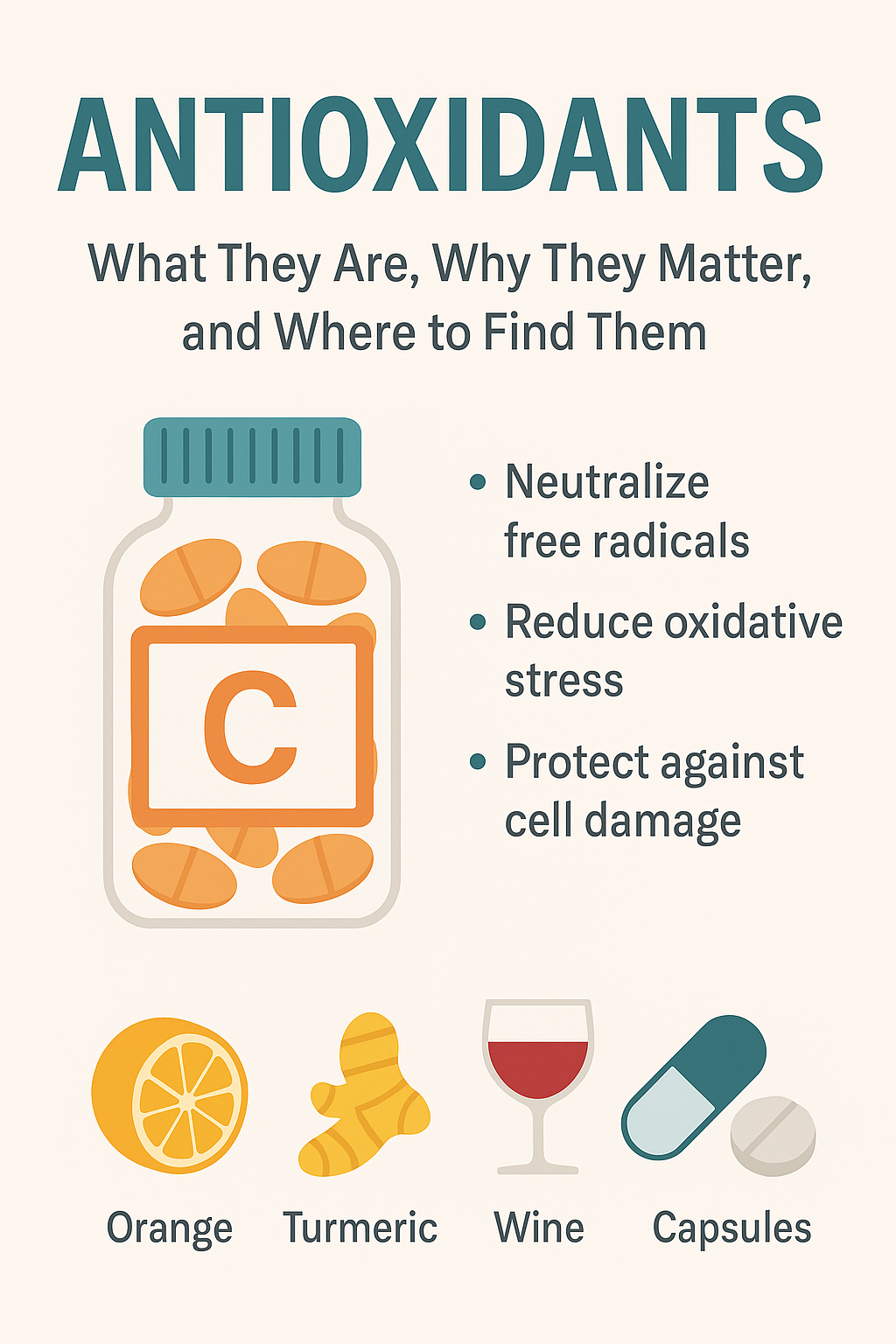(619) 465-4880
We hear a lot about antioxidants—from skincare products to supplements to the latest "superfood" trends. But beyond the buzzword, antioxidants play a real, powerful role in protecting our bodies from cellular damage and supporting long-term health.
So what exactly are they, and how do they help us? Let’s break it down.

Antioxidants are molecules that neutralize free radicals—unstable molecules that can damage cells, DNA, and tissues through a process called oxidative stress. Your body naturally produces free radicals through normal metabolic processes (like breathing and digesting), but environmental stressors—like pollution, poor diet, smoking, and stress—can increase them.
Over time, unchecked oxidative stress is linked to:
That’s where antioxidants step in. They scavenge free radicals and help repair oxidative damage, protecting your cells and reducing disease risk.
Antioxidants aren’t just hype—they’re well-documented in scientific literature. For example:
Found in citrus, strawberries, and bell peppers—but also a top supplement.
A fat-soluble vitamin found in nuts, seeds, and oils.
Your body’s “master antioxidant.” NAC (N-acetyl cysteine) helps you make more of it.
Works in both fat and water environments—making it a versatile antioxidant.
Found naturally in the body and in organ meats, but declines with age.
A powerful plant compound with both antioxidant and anti-inflammatory effects.
Found in grapes, berries, and red wine.
Carotenoids that protect eye tissue and the brain.
A marine carotenoid sourced from algae or krill.
Ideally, yes—but realistically, not always. Antioxidants are found in:
But modern life—processed foods, stress, pollution, and poor sleep—can deplete your body’s antioxidant reserves. That's where supplementation can be helpful, especially for people with:
Antioxidants aren't magic bullets, but they are essential tools your body uses to repair, defend, and thrive. Whether you’re supporting brain health, protecting your skin, recovering from intense workouts, or looking for anti-aging support, antioxidant nutrients play a foundational role in long-term wellness.
At Awesome Family Chiropractic, we believe wellness is a daily practice—and supporting your body at the cellular level is one of the best investments you can make. Ask us if antioxidant support is right for your care plan—we’re always here to help.
This blog is for educational purposes only and not a substitute for professional medical advice. Consult a healthcare provider before starting any new treatment. Outcomes and experiences discussed may vary. For immediate medical concerns, contact your physician.
References:
¹ https://www.frontiersin.org/articles/10.3389/fphys.2018.00943
² https://academic.oup.com/ajcn/article/91/3/701/4597111
³ https://www.ncbi.nlm.nih.gov/pmc/articles/PMC5796030/
⁴ https://link.springer.com/article/10.1007/s00421-006-0108-6
⁵ https://jamanetwork.com/journals/jamaneurology/fullarticle/778588
⁶ https://journal.chestnet.org/article/S0012-3692(15)33395-1/fulltext
⁷ https://diabetesjournals.org/care/article/26/8/2460/24091
⁸ https://academic.oup.com/ajcn/article/85/5/1226/4649371
⁹ https://pubmed.ncbi.nlm.nih.gov/25640647/
¹⁰ https://academic.oup.com/biomedgerontology/article/66A/11/1181/660510
¹¹ https://www.aaojournal.org/article/S0161-6420(14)00348-8/fulltext
¹² https://www.ncbi.nlm.nih.gov/pmc/articles/PMC5946307/